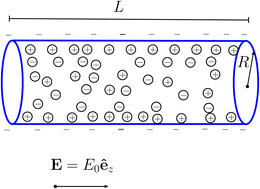Spiers Memorial Lecture: Towards understanding of iontronic systems: electroosmotic flow of monovalent and divalent electrolyte through charged cylindrical nanopores
Abstract
In many practical applications, ions are the primary charge carrier and must move through either semipermeable membranes or through pores, which mimic ion channels in biological systems. In analogy to electronic devices, the “iontronic” ones use electric fields to induce the charge motion. However, unlike the electrons that move through a conductor, motion of ions is usually associated with simultaneous solvent flow. A study of electroosmotic flow through narrow pores is an outstanding challenge that lies at the interface of non-equilibrium statistical mechanics and fluid dynamics. In this paper, we will review recent works that use dissipative particle dynamics simulations to tackle this difficult problem. We will also present a classical density functional theory (DFT) based on the hypernetted-chain approximation (HNC), which allows us to calculate the velocity of electroosmotic flows inside nanopores containing 1 : 1 or 2 : 1 electrolyte solution. The theoretical results will be compared with simulations. In simulations, the electrostatic interactions are treated using the recently introduced pseudo-1D Ewald summation method. The zeta potentials calculated from the location of the shear plane of a pure solvent are found to agree reasonably well with the Smoluchowski equation. However, the quantitative structure of the fluid velocity profiles deviates significantly from the predictions of the Smoluchowski equation in the case of charged pores with 2 : 1 electrolyte. For low to moderate surface charge densities, the DFT allows us to accurately calculate the electrostatic potential profiles and the zeta potentials inside the nanopores. For pores with 1 : 1 electrolyte, the agreement between theory and simulation is particularly good for large ions, for which steric effects dominate over the ionic electrostatic correlations. The electroosmotic flow is found to depend very strongly on the ionic radii. In the case of pores containing 2 : 1 electrolyte, we observe a reentrant transition in which the electroosmotic flow first reverses and then returns to normal as the surface change density of the pore is increased.

- This article is part of the themed collections: The Spiers Memorial Lectures and Iontronics: from fundamentals to ion-controlled devices


 Please wait while we load your content...
Please wait while we load your content...